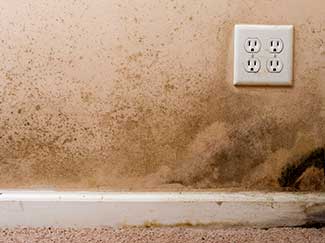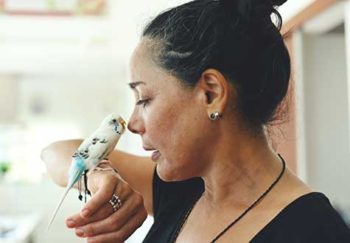
April showers bring May flowers! While the beautiful colors and smell of wet earth are certainly wonderful, the humidity and increasing heat can bring something else with it, too: mold.
Are mold exposure symptoms dangerous? We partnered with Ira Helenius, MD, an internal medicine provider at UVA Health System, to find out more.
Mold: Frequently Asked Questions
What is Mold?
Molds are a kind of fungus that spread through tiny spores that travel in the air. There is always some mold everywhere, both indoors and out. Molds play an important role in our ecosystems by breaking down dead plants and trees.
Molds can grow on most moist surfaces, which is why they thrive during spring’s wet weather. Mold can grow in your home, too, and without you knowing it’s there. As long as there’s moisture and food for the mold (which includes most building materials, like the plywood in your floor, the paper in your drywall and the fibers of your carpet), it will grow.
Certain events can increase your exposure to mold, like extremely wet weather and hurricane flooding. After flooding, homes can easily become mold-infested. To prevent this, clean up and dry out wet areas as quickly as possible. Mold can be very difficult to fully remove and may require professional cleaning and replacing of mold-infected floors, walls or ceilings.
If It’s So Common, Why Is Mold Dangerous?
You’re around molds every day. Usually they’re harmless, but some people are sensitive or allergic and have mild or serious physical reactions to breathing in mold spores. People with health issues, particularly those with weakened immune systems, may get lung infections from exposure to high concentrations of mold spores.
High indoor mold spore levels have been connected to increases in flare-ups in asthma patients as well as respiratory issues and illnesses in otherwise healthy people. The Centers for Disease Control and Prevention (CDC) found that mold exposure is connected to the development of asthma in both adults and children who are already at risk of developing it.
What Are Mold Exposure Symptoms?
According to the National Institutes of Health (NIH), mold exposure symptoms include:
- Sneezing, nasal congestion or runny nose
- Wheezing and difficulty breathing
- Cough
- Throat irritation
- Chest tightness
- Skin rash
- Headache
However, having these symptoms doesn’t necessarily mean that you’re having a reaction to mold, cautions Helenius. She notes that these symptoms could also be caused by other environmental factors, such as seasonal allergies, and don’t necessarily indicate that you have a sensitivity to mold.
Also, breathing in high concentrations of mold spores may trigger asthma attacks in people who already have asthma. The CDC recommends that people with asthma or other lung conditions, like chronic obstructive lung disorder (COPD), should stay away from places where mold can be seen or smelled, even if they aren’t allergic to mold.
The CDC also recommends that people with weakened immune systems — cancer patients on chemotherapy, those who have received an organ or stem cell transplant, and HIV patients — stay away from moldy areas, which can include such places as:
- Saunas
- Flower shops
- Summer cottages
- Antique shops
- Greenhouses
- Farms
- Mills
- Construction areas
Is “Toxic Mold” the Same as Black Mold?
According to the CDC, the term “toxic mold” isn’t accurate. Molds can be different colors, including black. Although some molds can produce toxins, called mycotoxins, the molds themselves aren’t poisonous. Exposure to these molds, no matter the color, isn’t necessarily more toxic or dangerous than exposure to other kinds.
There have been a few reports of uncommon health conditions, such as pulmonary hemorrhage or memory loss, connected to mold exposure. These are rare. Researchers haven’t found a direct link between the mycotoxins produced by the mold and these health conditions.
Think Mold Is Making Your Asthma Worse?
See a specialist at UVA’s Asthma Allergy and Immunology clinic.
How Can I Protect Myself From Getting Sick?
If you’re feeling symptoms and suspect that mold is the cause, clean your home. In particular, clean up areas that get wet, like the kitchen and bathroom, with soap or bleach. Having good ventilation in your home can also help clear out spores from the inside air, so open up windows and let fresh air in.
You should also:
- Keep humidity levels down. A dehumidifier can help.
- Fix any leaky pipes or other areas of problematic moisture.
If you discover signs of mold invasion in your home, advises Helenius, you should contact a mold removal specialist to help you get rid of the problem.
Most importantly, see your primary or family care provider if you feel like you have symptoms of mold exposure. Your provider may decide to have you visit a specialist, like an allergist, infectious disease specialist or, possibly, a pulmonologist.


What should the maximum and minimum humidity levels be in a room